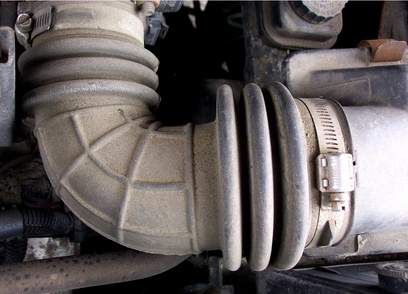
Installation of an engine heater in a General Motors (GM) automobile can greatly assist with starting the engine on cold winter mornings. These engine heaters are connected in-line with the host leading from the radiator to the engine block, and they heat the antifreeze fluid between the radiator and the engine block itself. To ensure a clean installation free from leaks, close attention should be paid when making measurements and when seating the unit into the radiator hose ends.
Measure the length of the barrel-shaped engine heater with a tape measure. This measurement should be made from the lip of one collar to the lip of the other collar. To identify the collar lips, hold the heater horizontally in front of your eyes. Make note of both ends of the heater that are designed to slide into each end of a cut-out section of the radiator hose. The collars are the raised rings to which the hose ends will contact after being slid on the entire way. The smaller diameter parts aren't included in the measurement since they are inserted into the radiator hose.
Drain all of the radiator fluid from the car's radiator, allowing it to fall into a clean bucket so it may be reused once the heater has been installed.
Mark the area at the midpoint of the radiator hose where the heater will be installed. Use the measurements made previously to determine where the two cut marks are to be placed on the radiator hose.
Cut the necessary chunk out from the center of the radiator hose using a sharp razor knife. Cut as cleanly as possible.
Slide a hose clamp over each of the ends of the radiator hose where the cut was made.
Insert one end of the engine heater into the end of one side of the radiator hose until the hose touches the metal ring collar firmly, then slide the other end of the heater into the remaining loose end of the radiator hose. Bend the other end of the hose as needed until it slides onto the end of the heater. The end result is that both ends of the radiator hose should be touching the collar, and the ends of the heater are fully inserted into the hose ends.
Slide the hose clamps to within about 1/2 inch from the collar and tighten them firmly with a screwdriver.
Hang the power wire plug near the front of the vehicle. If possible, make the plug easily accessible either near the bottom of the front bumper, or route so it hangs from the front grill of the vehicle. This will provide ease in connecting an extension cord to the heater unit.
Pour the coolant back into the radiator, then start the vehicle and allow to run for several minutes. Turn the vehicle off and allow to cool down for about an hour and then check the fluid in the radiator. Add any necessary to ensure it is full.